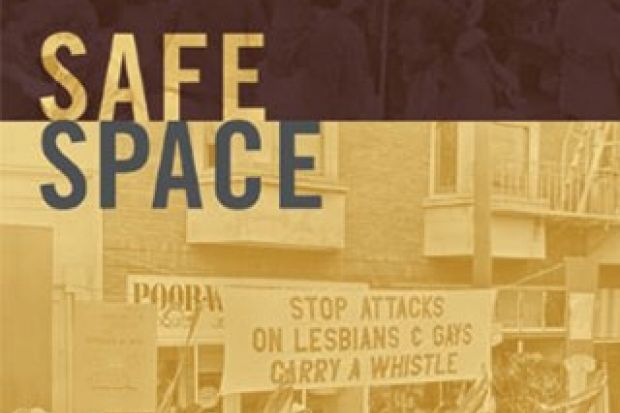Introducing students to the extensive struggles for lesbian, gay, bisexual and transgender (LGBT) rights and equalities in Western societies usually involves a thorough overview of the 1969 Stonewall riots, the precursor to contemporary Gay Pride parades. To a generation that believes gays and lesbians only collect en masse to dance on floats adorned in rainbow flags while in drag or pristine white underpants, the concept of gays rioting never fails to raise an eyebrow or two.
More than four decades later, gay rights are still topical, although they are now usually gained through political processes. While the UK’s first same-sex marriage will take place in 2014, in the US such changes have often been the result of legal battles over individual states’ positions on homosexuality. Therefore, when Maryland extended marriage rights to same-sex couples earlier this year on the basis of a popular not electoral vote, this was a watershed moment in social progress and equality.
In this vein, it is fitting that Maryland is also home to Christina Hanhardt, author of Safe Space: Gay Neighborhood History and the Politics of Violence. The book’s extensive coverage of LGBT activism in the latter half of the 20th century illustrates how contemporary socio-legal gains were made possible by resistance-fuelled, political organising. What began as a gay backlash to victimisation soon became a platform for resistance to state violence.
Contemporary socio-legal gains were made possible by resistance-fuelled, political organising. What began as a gay backlash to victimisation soon became a platform for resistance to state violence
Hanhardt analyses how US crime policies to clamp down on “deviants” and “undesirables” had an impact on specific neighbourhoods, particularly in New York City and San Francisco. Urban development became a prevailing crime-control mechanism in inner-city areas, with spaces rendered “safe” by designated area patrols. Whereas this once meant the state protecting (heterosexual) society from “undesirables” such as gay communities, the gradual shifts towards gentrification led to similar processes creating class and race hierarchies within minority groups.
“Gay space” developed in response to a growth in both visibility and the threat of violence. Safety strategies included community-based patrols to protect gay citizens. However, their focus slowly shifted from state violence to the same social “undesirables” targeted in wider crime-control policies. New forms of multiple marginalisation along gendered, racial and class lines faced those not included in “gay gentrification”.
Hanhardt notes: “The idea that LGBT safety would come through neighborhood-based crime control strategies had become so commonplace that the target of Greenwich Village residents’ neighborhood protection efforts would be the very people who most face the kinds of interpersonal, state-sponsored, and structural violence that the LGBT movement had been founded to fight.”
Herein lies the crux of her argument: on the plus side, the development of gay communities not only assisted the construction of fixed, visible physical spaces (there are maps at the end of the book to assist with visualising these) but also helped to enhance ideological and discursive spaces where sexuality could be reimagined. On the downside, this took place during a politically tenuous time, characterised by aggressive policing on the basis of enhancing personal safety. Thus, gentrification processes ironically led to some gay communities in the US becoming part of wider social measures aimed at “cleaning up city streets”.
Such an incredibly detailed piece of work requires the processing of a lot of information, not least the substantial number of smaller or nuanced activist organisations it references. Reading the book over several days, I resorted to flicking back through pages to familiarise myself with acronyms; a list of them would have been as useful as the aforementioned maps. Overall, this is a fascinating insight into lesser-known aspects of America’s gay liberation movement.
Safe Space: Gay Neighborhood History and the Politics of Violence
By Christina B. Hanhardt
Duke University Press, 360pp, £71.00 and £16.99
ISBN 9780822354574 and 4703
Published 25 October 2013
Register to continue
Why register?
- Registration is free and only takes a moment
- Once registered, you can read 3 articles a month
- Sign up for our newsletter
Subscribe
Or subscribe for unlimited access to:
- Unlimited access to news, views, insights & reviews
- Digital editions
- Digital access to THE’s university and college rankings analysis
Already registered or a current subscriber?




